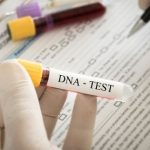Autism is a brain development disorder and behaviors of those who have autism range from: hindered or impaired social interaction and communication; repetitive behavior such as hand-flapping, body rocking or head rolling; compulsive behavior such as arranging objects according to size, shape or color; the dislike of change; ritualistic behavior; self-injury; all starting before a child is three years old.
Up to this date, diagnosis has always been based on behavior – the child must exhibit at least six symptoms, such as lack of social or emotional reaction, repetitive use of language, problems with all types of communication and a fixation with objects. Autistic children may fail to respond to their name and often avoid eye contact with others. They have difficulty interpreting what people are thinking or feeling because they can’t understand social cues, such as tone of voice or facial expressions, and they don’t watch other people’s faces for clues about appropriate behavior. In a nutshell, they lack empathy.
Unfortunately, Autism is a common disease and effects approximately 1 in 150 births, according to the Centers for Disease Control and Prevention in 2007. This means as many as 1.5 million Americans today are believed to have some form of autism.
Based on statistics from the U.S. Department of Education, autism is growing at an alarming rate of 10-17 percent per year, and affects all races and ethnicities. At this rate, it is estimated that autism could affect 4 million Americans in the next decade! And although the overall incidence of autism is consistent around the globe, it is four times more prevalent in boys than in girls.
So how does Autism occur? What causes it to happen? This has been an ongoing debate for quite a long time.
According to Carolyn Abraham from the Globe and Mail (January 10, 2008):
Two independent research teams have pinpointed the genetic glitch behind certain cases of autism, paving the way for the first DNA test to reliably predict who will develop the disorder.
Researchers with the Boston-based Autism Consortium have found that children who carry a missing or duplicated stretch of chromosome 16 have a 100-fold increased risk of developing autism. The mutation, confirmed through genetic scans of more than 1,400 people with autism in three separate study groups, appears most often to be the result of a random quirk not seen in either parent. Published in today’s New England Journal of Medicine, the Boston paper estimates the mutation is linked to about 1 per cent of all autism cases.
If the genetic code in this region is deleted – like a sentence missing several words – it cannot be read, said Dr. Scherer, and this seems to result in more severe cases of autism. If the code is duplicated, the disorder appears to be milder – like a sentence in which repeated words make it difficult, but not impossible, to read.
According to Dr. Scherer, “The link between the mutation and autism is so strong that it will herald “the first highly predictive DNA test for an autism disorder. We are transferring the technology [to perform the test] from our research lab to the diagnostic clinic as we speak.”
Interestingly enough, other types of mutations at Chromosome 16 have been identified as responsible for diseases such as: Crohn’s Disease; Inflammatory bowel disease, tuberous sclerosis, Charcot-Marie-Tooth disease, polycystic kidney disease and others. Now Autism can be added to it’s list.
As previously stated, in the past Doctors have relied on behavior to diagnose the disease. However, with this new technology, an inexpensive DNA test could identify those who are still in the womb, or infants who are suspected to have the disease. No doubt this pre-birth identification will generate either a positive, or negative, controversial reaction from people, depending on their beliefs.
Children’s Hospital in Boston is now also offering the test for the Chromosome 16 mutation for Autism.




